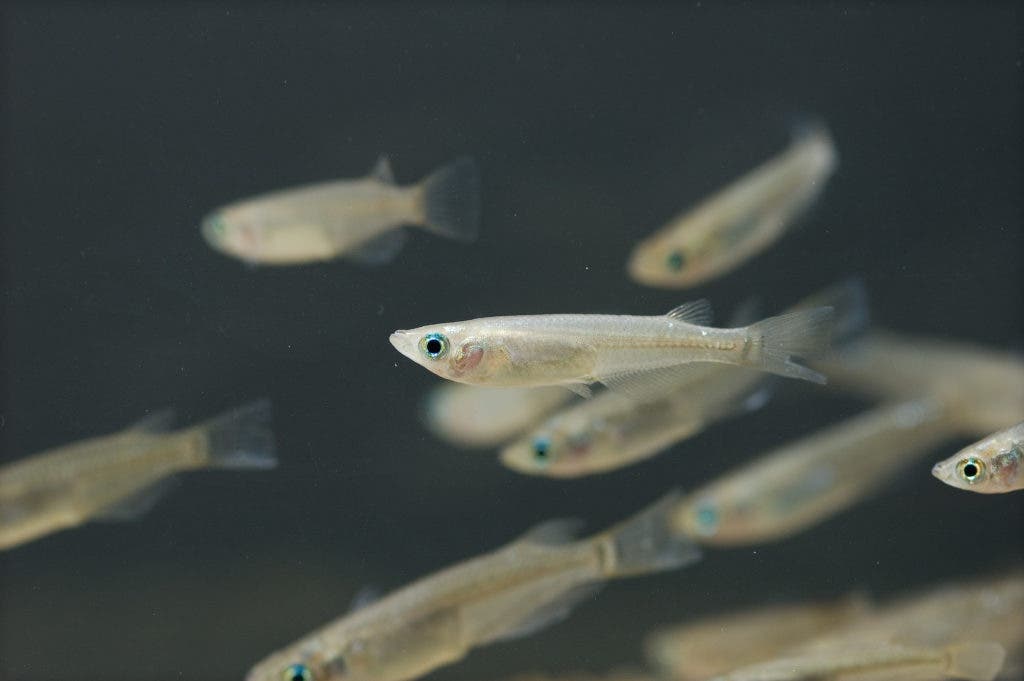
Some people recognize and remember faces better than others. This ability is suddenly lost if the face is inverted or if, by some weird turn of events, you’re seeing things upside-down. This brain quirk has been thoroughly documented and until not too long ago it was thought to be solely a mammal thing. A new study performed by scientists at the University of Tokyo, however, shows that this happens to Japanese rice fish as well. It follows that inverted-face brain override is likely linked with brain mechanisms in social animals in general, be them mammals or fish.
A social fish
Japanese rice fish (Oryzias latipes) are tiny 3.5-centimeter-long shoaling fish commonly found in slow-moving streams in East Asia. As the name implies, they’re most often encountered in rice paddies where they mingle with their peers.
This is a highly social fish known to be able to recognize individuals easily. With this in mind, the Japanese researchers thought this was an excellent opportunity to investigate whether the face-inversion effects applies to these animals too.
To make things relevant, the researchers exploited the fact that rice fish females mate faster with a male that they recognize. What they did was pair various acquainted male and female rice fish, before gradually masking either the face, body or tail of males with a semi-transparent film.
The team found that only when the male’s face was covered did the female fail to recognize its pair. To work out whether the fish are able to recognize inverted faces too, the Japanese scientists simply used a prism to inverted the male’s face either vertically or horizontally.
To everyone’s surprise, the fish were unable to recognize the inverted faces, whether horizontal or vertical. And just like humans, they were able to recognize inverted objects that don’t resemble faces instead.
Face time
Humans have no problem recognizing a chair or car that’s upside down but neither we nor the Japanese rice fish can seem to handle inverted faces. This has something to do with a region of the brain dedicated to processing faces called the fusiform face area. This brain area stores and simplifies faces so you make next to no effort when the time comes to identify an individual. Oddly, the fusiform face area (FFA) stops showing brain activity when faces or objects resembling faces are revolved 180 degrees.
We always thought FFA’s response had something to do with how social us mammals are, but to witness a fish behave in the same way comes with many implications. The findings hint that there has been an evolutionary trade-off when animals specialized their face-recognition ability. Although the upside-down and right-side-up face essentially conveys the same information, primate and some fish brains that we know of so far have gone down a route that quickly and accurately identifies faces. Somewhere along this route, a decision has been made to ignore information from objects resembling faces of an unexpected orientation.
This hypothesis makes sense. Just take a second to imagine ancient humans strolling through the dark woods in search of game. Their brains are already hardwired to confuse a twig for a snake because a false positive is better than the risk of a false negative — it could mean the difference between life and death. At the same time, twisted roots or twigs that might form an inverted face would only confuse us. A lot of things look like faces after all. So, a necessary trade-off had to be made.


